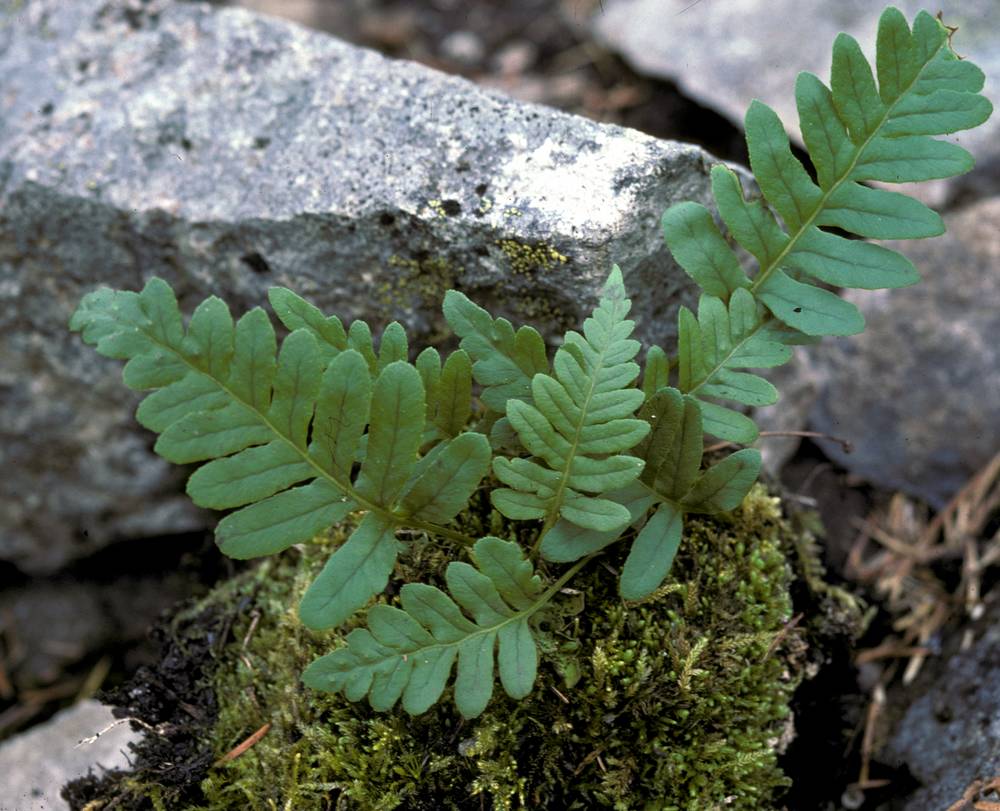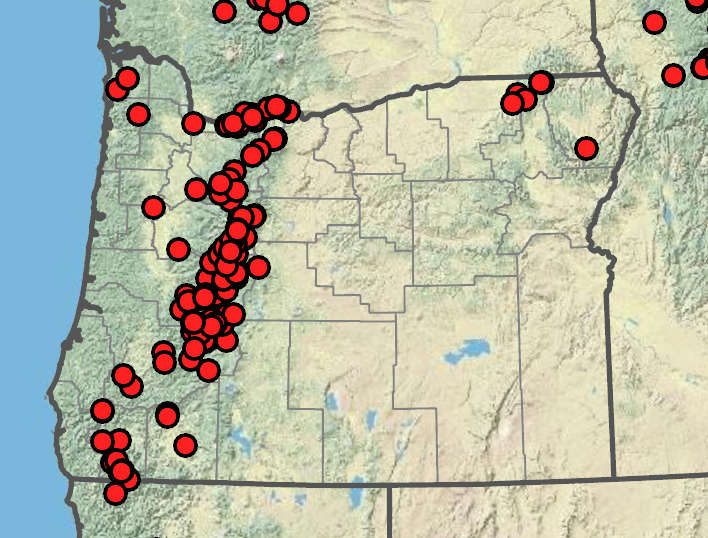Polypodium hesperium
Polypodium appalachianum
western polypody
slender, white pruina often present;
scales dense, brown, lanceolate, toothed or entire;
taste acrid/bitter.
to 30 × 5 cm;
petiole slender; to 12 × 0.1 cm.
oblong to narrowly ovate; pinnatifid, slightly leathery; up to 18 × 5 cm, glabrous above;
scales on abaxial rachis sparse, brown; less than 6 cells wide.
small, oblong; to 2.5 × 1 cm;
margin entire to serrulate;
apex rounded to acute;
veins free.
rounded; less than 3 mm, often oval when immature;
sporangiasters absent; but aborted purplish sporangia often present.
=148.
Polypodium hesperium
Polypodium appalachianum
Cliffs, crevices, and talus slopes. 50–1800 m. BW, Casc. CA, ID, WA; north to British Columbia, south to northwestern Mexico. Native.
This is the only Polypodium species in Oregon found east of the Cascade range. The lack of sporangiasters distinguishes it from P. amorphum, but the frequent sterile sporangia can cause confusion where the ranges of the two species overlap in northwestern Oregon.
Duncan Thomas
- Local floras:
BC,
CA,
OR,
WA
- Local Web sites:
CalFlora,
CalPhotos,
Flora NW,
PNW Herbaria
WildflowerSearch
iNaturalist (observations)
USDA Plants Database
- LBJ Wildflower Center
- SEINet
- Plants of the World Online
- Encyclopedia of Life
- Wikipedia
- Google Image Search



